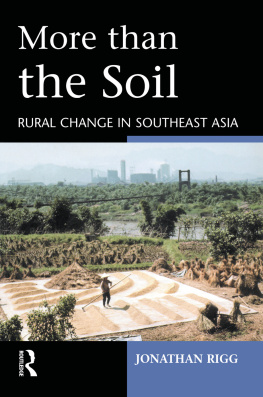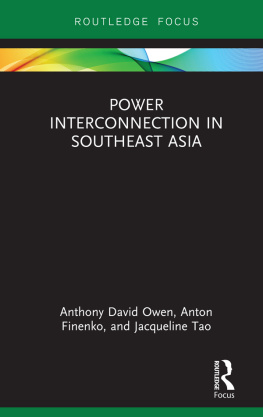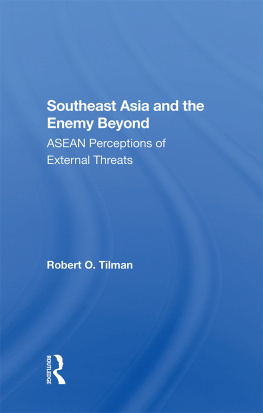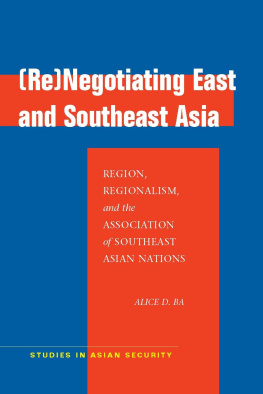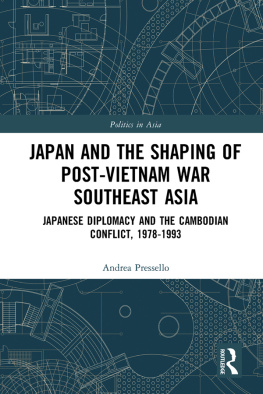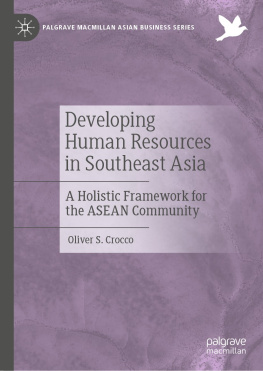Routledge Revivals
Southeast Asia
Southeast Asia: A Region in Transition, first published in 1991, is a contemporary human geography of the market economies of the region usually defined by membership of the Association of Southeast Asian Nations (ASEAN). Organized thematically, the chapters deal with the environment and development, plural societies, agrarian change and urbanization. This thematic approach provides a comprehensive picture of the ASEAN countries and gives a depth of coverage often lacking in other regional geographies. With a detailed introduction dealing with the physical environment and history of the region, this work will be of great value to students studying the human geography of Southeast Asia, as well as those with a more general interest in the issues and developments affecting the ASEAN region.
Southeast Asia
A Region in Transition
Jonanthan Rigg
First published in 1991
by Unwin Hyman Ltd
This edition first published in 2013 by Routledge
2 Park Square, Milton Park, Abingdon, Oxon, OX14 4RN
Simultaneously published in the USA and Canada
by Routledge
711 Third Avenue, New York, NY 10017
Routledge is an imprint of the Taylor & Francis Group, an informa business
1991 Jonathan Rigg
All rights reserved. No part of this book may be reprinted or reproduced or utilised in
any form or by any electronic, mechanical, or other means, now known or hereafter
invented, including photocopying and recording, or in any information storage or
retrieval system, without permission in writing from the publishers.
Publishers Note
The publisher has gone to great lengths to ensure the quality of this reprint but points out that some imperfections in the original copies may be apparent.
Disclaimer
The publisher has made every effort to trace copyright holders and welcomes correspondence from those they have been unable to contact.
A Library of Congress record exists under LC control number: 90012836
ISBN 13: 978-0-415-85827-4 (hbk)
ISBN 13: 978-0-203-79694-8 (ebk)
SOUTHEAST ASIA
A Region in Transition
A thematic human geography of the ASEAN region
Jonathan Rigg
First published 1991
by Unwin Hyman Ltd
Reprinted 1994
by Routledge
11 New Fetter Lane, London EC4P 4EE
29 West 35th Street, New York, NY 10001
1991 Jonathan Rigg
Typeset in 10 on 11 point Bembo
Printed in Great Britain at the University Press, Cambridge
All rights reserved. No part of this book may be reprinted or
reproduced or utilized in any form or by any electronic, mechanical,
or other means, now known or hereafter invented, including
photocopying and recording, or in any information storage or
retrieval system, without permission in writing from the publishers.
British Library Cataloguing in Publication Data
A catalogue record for this book is available from the British Library
Library of Congress Cataloging in Publication Data
A catalog record for this book is available from the Library of Congress
ISBN 0-415-11938-3
For Janie
This book is a thematic contemporary human geography of the Association of Southeast Asian Nations (ASEAN) and has been written to fulfil two main objectives. First, to present an up-to-date statement covering some of the changes that are currently affecting the countries of the area. And second, to provide an account that gives greater detailed discussion than would normally be found in a general, regional geography. It is for this reason that a thematic approach has been adopted. In addition, and arising from the objectives that have been set and the approach selected, the book focuses only on the countries of ASEAN, namely Brunei, Indonesia, Malaysia, the Philippines, Singapore, and Thailand.
Eight themes have been selected, most of which are illustrated with detailed reference to the experience of a single country. Although the specifics of each discussion may not apply across the ASEAN region, the essence usually does, and in each case lessons and implications can be drawn that have wider application. An inevitable danger with any book of a thematic nature is that no one will be satisfied with the themes that are chosen. There are good reasons, for example, to include chapters on the development of marine resources, on population growth and family planning, and on regional development, to name but three. However, it is felt that the disadvantages of following a thematic approach are more than counterbalanced by the greater detailed discussion that is possible. The themes selected in part reflect a personal preference, although the purpose is also to cover a range of issues and debates. Thus there are chapters covering such topics as rice cultivation and agrarian change, urbanization and primacy, natural resource development, plural societies, and land settlement.
Each of the chapters stands on its own and reference need not be made to other sections of the book. But that said, the intention is that the book should build up a patchwork of understanding in which the perspectives of one chapter link up with those of another. In addition there are two introductory chapters that deal briefly with the physical environment and with the history of the area. Although not exhaustive, which would be an impossible task, it is hoped that the book will provide a broad framework without sacrificing too much of the detail that is so crucial to building an understanding as well as an appreciation.
Jonathan Rigg
London,
Spring 1990
I am very grateful to the following people who kindly offered their advice and encouragement while I was writing this book. In the Department of Geography at the School of Oriental & African Studies I would like to thank Richard Edmonds, Keith McLachlan and, especially, Philip Stott for their suggestions and their time, and Catherine Lawrence who drew all the maps. And in the Department of Economics and Political Science, Peter Ayre and Robert Taylor. I am also grateful to Richard Barry, who offered a number of insights into the oil industry in Indonesia.
A substantial portion of the book was written while I was a British Academy Research Fellow at SOAS and I am very grateful for the support of the British Academy during that time.
Finally, I would like to thank my wife, Janie, who put up with a great deal.
Contents
Structure and geology of Southeast Asia |
Tectonics and the rifting of Southeast Asia: late Eocene (40 Ma) |
Climate and rainfall |
Rainfall: Singapore |
Rainfall: Ujung Pandang, Sulawesi |
Rainfall: Mahasarakham, Northeastern Thailand |
Rainfall: Kupang, Eastern Indonesia |
Southeast Asia: relief |
Water for life: Lua rice terraces, Mae Hong Son, Northern Thailand |


